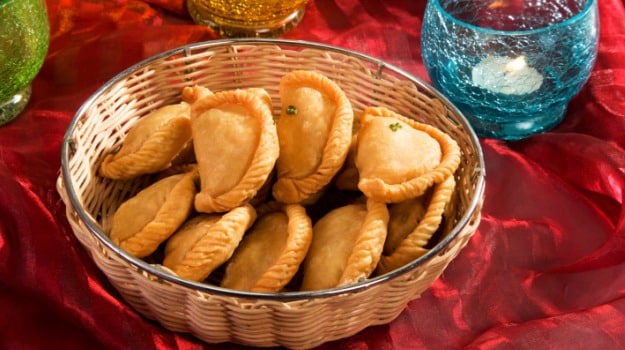
The 'Festival of Colors' is knocking at our door. Holi is celebrated with much fervor and fanfare in northern India. No celebration is complete without sweets, and Holi is no exception. But while Holi is a time for merriment, we should also be alert about what we eat. Delicacies like Gujia, Thandai, Lavang Latika and Khoya Burfi are all synonymous with the festival.
Gujiya, a sweet dumpling made with suji or maida is stuffed with khoya. Sometimes, kesar(saffron) is added to enhance the yellow color of the sweet. But since kesar is very expensive, chances are kesar Gujia will only be available at reliable outlets selling branded products, otherwise chances of adulteration are quite high. While buying branded products, check the batch number, manufacture date, expiry date, food license number, as well as ISI or AGMARK certifications on the packaging. Also, make sure that the packaging has not been tampered with.
Paneer, khoya and milk are generally adulterated with starch which is used to give a thick, rich texture to sweets. To check for the presence of starch mixed with khoya, take a small sample and mix it with water and bring to the boil. Allow it to cool and add two drops of iodine in the solution. If the solution turns blue, then it has been adulterated with starch.
Thandai, a milk based summer drink is synonymous with Holi. An exotic mix of spices, nuts and full fat milk go into the making of this cooling summer drink, which is traditionally mixed with bhang during Holi. The popularity of this drink lies in its recipe, which includes a number of ingredients that can be subject to adulteration, particularly during Holi, when the demand increases. Synthetic artificial colors and flavors are also used in such drinks, which may not be allowed under the food safety regulations due to their harmful effects. Therefore, it is advisable to buy the ingredients fresh from a reliable retailer and prepare this traditional drink at home.
In order to reduce the cost of production of sweets and give them a finer appearance without putting in extra capital, unscrupulous sweet merchants put in unhealthy add-ons to serve their purpose. These chemicals could be used to enhance color, texture or taste. Always taste or smell the sweets before buying in bulk. Stale products emit a musty smell and taste slightly sour. Before purchasing sweets, you should also make sure that the shopkeeper is trustworthy.
The larger public is not optimally aware about adulteration and the ways in which items of consumption are laced with harmful additives. In fact, most people are unaware that a law prohibiting adulteration actually exists. The Food Safety and Standards Act (2006) safeguards the consumer against misbranded food, sub-standard food and food containing extraneous matter by keeping provision of penalties. If a food product is found unsafe then the food business operator may be levied with a maximum fine of Rs. 10 lakhs along with an imprisonment which may extend even up to a life-term.
It is also important for the consumers to see the hygiene standards of the sweet shop while buying sweets to check if cleanliness is being maintained and whether food handlers are following basic personal hygiene standards. Look out for the following:
Are food handlers wearing clean clothes?
Are they wearing gloves while packing sweets from the counter?
Are they chewing or smoking tobacco?
Are they touching their mouth, nose, eyes or other body parts?
Are they spitting, sneezing, or coughing near food?
Are they handling food and money simultaneously?
At the end of the day, it is up to you to save yourself and your family from becoming victims of food adulteration. Just follow these tips and celebrate a safe and happy Holi
No comments:
Post a Comment